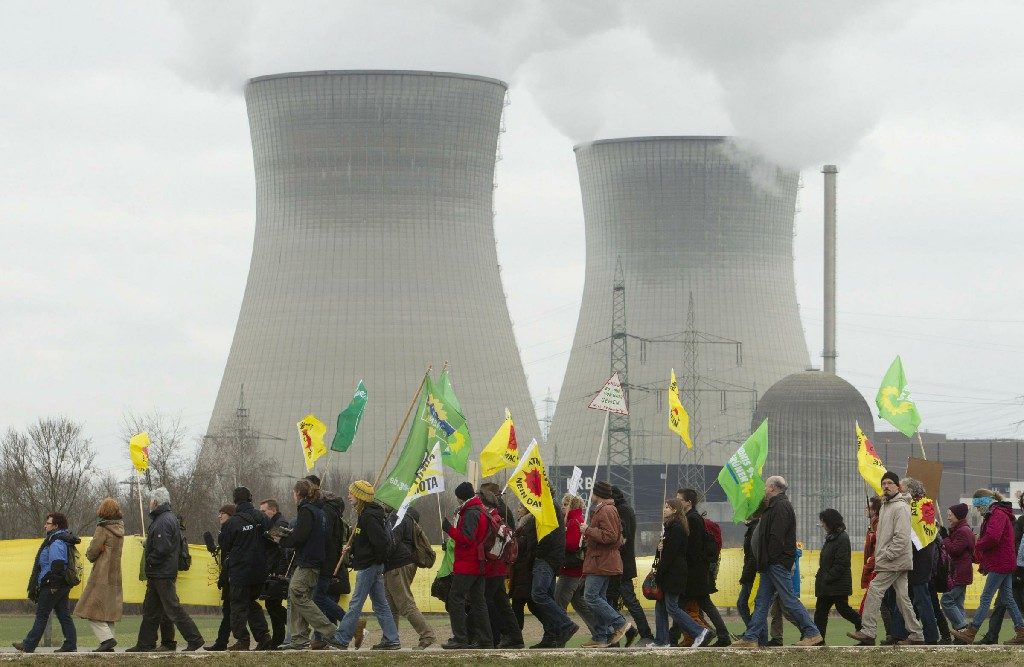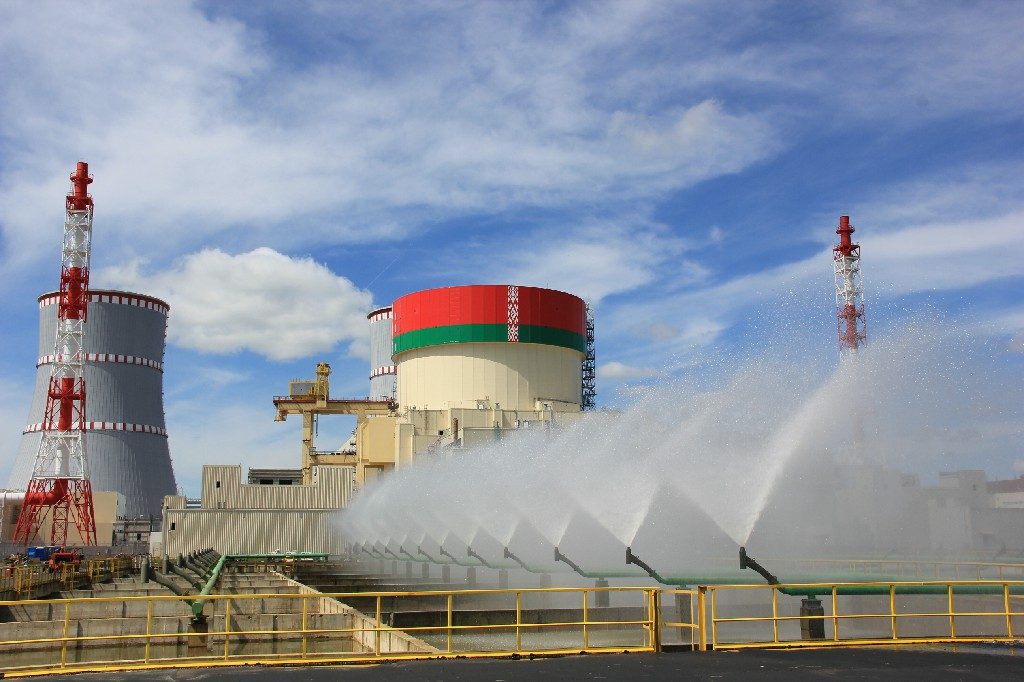
Nuclear to Support Climate Neutrality
back to contentsThe global community keeps discussing the eligibility of nuclear energy for the energy mix. An obvious argument for the nuclear industry, which has recently resurfaced, is that peaceful atom is the only source of carbon-free energy except renewables. If we want to curb emissions and achieve climate neutrality, we need nuclear generation.
Discussions about nuclear energy are going on in the European Union, United States, and United Kingdom. Every day it becomes clearer that the stakes are growing. This is not about competition between available energy technologies but about how to avoid a climate disaster. There is a growing outcry from the professional community: why are we backing away from technologies that can save our planet from extreme warming?
“If they say this [climate change] is apocalyptic or it’s an unacceptable risk, and then they turn around and rule out one of the most obvious ways of avoiding it [nuclear power], they’re not only inconsistent, they’re insincere,” says Kerry Emanuel, a climate scientist from the Massachusetts Institute of Technology (MIT, USA). Tellingly, this quote was published by German newspaper Tichys Einblick, but Germany is consistent in its efforts to phase out nuclear energy as soon as possible. “Indeed, it is absurd that the same people who keep telling us daily about the looming climate change are always silent about nuclear energy,” complains an author of the article, Rainer Zitelmann. He added that the true reason behind the nuclear phaseout was not the Fukushima disaster but the victory of the Greens (hailing from the anti-nuclear activists) in the election in Baden-Württemberg just two weeks after the disaster. The phaseout was Angela Merkel’s attempt to win more votes in that situation, the author believes. It was a wrong move as Germany “has not succeeded much in tackling climate change since then despite all the efforts it has made.” As noted by the author, the 2021 Environmental Performance Index published by Yale University says some analysts believe the nuclear phaseout will make Germany fall short of its climate protection goal.
The same view is shared by French politicians and public figures. “What is happening in the EU now? The EU has set the goal of achieving carbon neutrality by 2050 and cut CO2 emissions by 55% by 2030 as compared to the 1990 level. It proceeds with promoting renewable energy and energy efficiency measures. All these efforts match the role the EU intends to play in fighting global warming. It is time for us to stop buying into myths, such as the one about the massive use of intermittent renewables being sustainable,” reads an article written by Bernard Accoyer, President of the Association for the Defense of Nuclear Heritage and Climate (PNC France) and ex-President of the National Assembly of France, and Marc Deffrennes, a founder of weCARE. They think responsible politicians should ask themselves about the role nuclear energy will play in the very low carbon energy mix and do their best to extend the life of existing nuclear power plants. This will help avoid any further major investments in gas, which will otherwise persist in the long run, along with carbon fuels. “Belgium is an example of what should never be done: it has phased out nuclear for political reasons alone, built gas-fired power plants instead, and used a financing mechanism that only (…) increases electricity costs for end consumers. Apart from maintaining the existing reactors, we should never stop developing reactors of the future, including smaller ones, for a better integration into a completely carbon-free, flexible and streamlined system,” the authors say.
“The current climate crisis is imminent and unavoidable. At the same time, more than 8 million people die each year from air polluted by fossil fuels. Those deaths can be avoided, and nuclear energy brings clear advantages in this context. It facilitates sustainable energy transition, improves air quality, creates new jobs, and enables continuous production of cheap green electricity at the power plants that have a relatively long service life – up to 80 years – and are safe,” say pro-nuclear activists Zion Lights (UK) and Isabelle Boemeke, and Myrto Tripathi, President of Les Voix du Nucléaire (a French NGO).
This July, American media website CNET published an article with multiple comments and data on the need to develop the nuclear industry to curb emissions. “Key to all of this is the degree to which you think we can actually meet climate goals with 100% renewables. If you don’t believe we can do it, and you care about the climate, you are forced to think about something like nuclear,” Leon Clarke, Research Director at the Center for Global Sustainability, commented on the matter.
The author of the article reminds that, after the Fukushima disaster, Japan replaced its nuclear power plants with coal-fired facilities instead of renewables. In the next five years, it is going to build 22 more coal-fired power plants. New York follows the same path. “But with three natural gas plants set up to help provide the power hitherto generated by Indian Point, emissions are likely to go up following the plant’s closure. This is more than a guess: natural gas’s share of energy consumption rose from 36% to 40% after Indian Point’s first reactor was shut last year,” Clarke says. The idea of replacing nuclear power plants with renewables is a mental trap because the ultimate goal should be decarbonization rather than playing with technologies. “People say, ‘Well, we are replacing nuclear with wind and solar… But I think that is looking at this backwards. We want to displace fossil fuels,” the article quotes Dietmar Detering, a German entrepreneur living in New York, as saying.
The conclusion about the importance of nuclear for decarbonization is made in the Nuclear Technology Review that relies on the data from UNECE’s Pathways Project (“Strengthening the Capacity of the UNECE Member States to Achieve the Energy-related Sustainable Development Goals – Pathways to Sustainable Energy”). “All available low-carbon technologies will need to be deployed to fill the gap between what has been committed and what is needed,” it says.
However, nuclear energy is still facing criticism. Even a quick online search brings up critical articles published by Forbes, Heinrich Böll Foundation (affiliated with the German Green Party), The New York Times, etc. In fact, the criticism comes down to four points: nuclear is expensive, takes too much time, dangerous, and customers become dependent on a technology vendor.
There are valid objections to each of the points, though. Let us look at the costs first. The Nuclear Technology Review prepared by the UNECE Task Force on Carbon Neutrality and a group of top international experts contains an important note saying that the levelized cost of energy (LCOE) from different sources should be compared country by country rather than viewed in general. Thus, LCOE for a nuclear plant in Japan, Russia and South Korea turns out to be the lowest as compared to any other renewables. The same holds true for nuclear generation in France and the USA. “In many parts of the world nuclear power is one of the most cost-competitive options for generating electricity. Just like other generating technologies the cost of nuclear electricity is sensitive to a range of factors including assumed asset lifetime, capacity factors, capital costs, fuel costs and operating costs,” the authors of the review point out.
They also believe that costs can be reduced further by improving design maturity and operation efficiency, ensuring reliable and predictable control, and launching mass production. This will bring the cost of building a post-FOAK station down by 40%, and serial reactors down by 60%. The reduction can be achieved through design optimization, technology innovation, revision of regulatory procedures, and harmonization of licensing, codes and standards.
As for the time needed to construct a nuclear plant, it is true that it cannot be built in a year, but it is quite possible in five to seven years. For example, first concrete for the foundation of the Belarusian NPP was poured in November 2013 and it was connected to the national power grid in November 2020. Many say it is much longer than building a wind or solar farm. True but we should keep in mind that the design lifetime of older nuclear reactors was 40 years, while today it is extended to as long as 80 years. The design lifetime of Rosatom’s nuclear stations is 60 years and may be extended to 80 and, possibly, even 100 years. In other words, a single nuclear power plant operates as long as three to five successive wind or solar farms do.
Nuclear waste is another concern, but countries like France and China are working on resolving the issue. However, Russia is the most active player in the ‘closed nuclear fuel cycle’ field. Today, this concept finds its way into practice in different ways: sodium-cooled fast reactors (e.g., BN-800 at the Beloyarsk NPP), lead-cooled fast reactors (e.g., pilot BREST-300 reactor), and REMIX fuel for VVER reactors. Closing the nuclear fuel cycle will enable full utilization of uranium energy capacity, as well as reduction in waste and storage time. The Nuclear Technology Review says about 97% of radioactive waste generated by the nuclear industry belongs to very low-level or low-level waste in terms of its radiochemical properties. High level radioactive waste accounts for as little as 0.1% of the total amount. In order to dispose high-level waste, Finland is building a deep geological repository structured with multiple safety barriers. Finally, even high-level radioactive waste has a natural ability of becoming safer over time.
Speaking about safety, let us not deny the obvious: the history of the nuclear industry (since the opening of the first nuclear power plant in 1954 in Obninsk, USSR) remembers only three large-scale nuclear accidents. Each accident led to a massive reevaluation of safety requirements. As you may know, no one died from radiation poisoning at Fukushima. The root cause analysis prompted numerous improvements in the design and operation of nuclear power plants. “Nuclear facilities are engineered with multiple protective barriers to protect people and the environment from the release of radioactive material. The regulatory justification for a proposed UK nuclear power plant estimates that the radiation dose to any member of the UK public per year to be around the same as from a return flight from the UK to New York. The nuclear energy industry is responsible for less than 0.1% of the radiation that most people are exposed to in their daily lives,” says the Nuclear Technology Review.
Some estimates suggest that nuclear is almost as safe as renewable energy sources, especially when compared with coal, oil or even natural gas.
Dependence on a technology vendor (primarily in terms of politics) is also exaggerated, as shown by the New Nuclear Watch Institute (NNWI) in a report called “Energy Security in the Age of Net-Zero Ambitions and the System Value of Nuclear Power.” It can be either reduced or is disadvantageous for the vendor itself. If the vendor quits the project before the construction begins, the customer will lose money spent on administrative expenses (e.g., negotiations). But the same expenses will be written off as a loss by the vendor, too. Thus, the risk of quitting the project is highly improbable, with the Bushehr project being the only exception. As you may know, the construction of the Bushehr NPP was launched by a Siemens division in 1975 and suspended 5 years later for political reasons. Another 12 years later, in 1992, Rosatom stepped in, and in September 2011, Bushehr Unit 1 was connected to the national power grid. Bushehr proves that a nuclear construction project can be completed by another vendor. Finally, the risk of nuclear fuel supply interruptions can be mitigated by building up reserves. Apart from that, competition is now so intense that a failure to meet contractual obligations is out of the question.
To recap, nuclear generation is carbon-free, reliable and independent from the weather or fuel prices, and prevents emissions of greenhouse gases, ash and dust. With a favorable political environment and public perception, nuclear is able to make a sizable contribution to the planet’s clean future.




